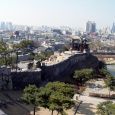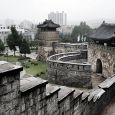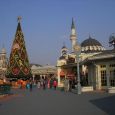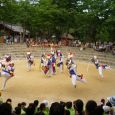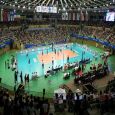Suwon
Advertisement
By Air
Incheon International Airport (IIA) (IATA: ICN, ICAO: RKSI) is Located 70 km (43 mi) west of Seoul, the capital and largest city of South Korea, Incheon International Airport is the main hub for Korean Air, Asiana Airlines and Polar Air Cargo.The airport serves as a hub for international civilian air transportation and cargo traffic in East Asia.Incheon International Airport is also currently Asia's eighth busiest airport in terms of passengers, the world's fourth busiest airport by cargo traffic and the world's eighth busiest airport in terms of international passengers in 2010.
By Train
Suwon has several stations on Seoul Subway Line 1, which runs North-South through the city, namely Sungkyunkwan University, Hwaseo, Suwon and Seryu.An extension of the Bundang Line to cross Suwon East-West, terminating at Suwon, is under construction, as is a further line connecting Suwon Station to Incheon.Until 1973, the Suryo Line also connected Suwon to Yeoju.The Yeongdong Expressway (Number 50) passes through Suwon and two exits on this motorway lie within the city limits, being North Suwon and East Suwon.Suwon is also served by the Suwon exit of the Gyeongbu Expressway (Number 1), though this lies a short distance east of the Suwon's limits, near Singal in the city of Yongin.
By Bus
There is a bus service to the KTX high-speed train station at Gwangmyeong.Suwon is connected to Seoul and other nearby cities by city and express buses with departure points across the city.There are also two bus terminals in Suwon with inter-city and express bus connections to most cities in Korea.These are Suwon Bus Terminal and West Suwon Bus Terminal, which is located near Sungkyunkwan University.KTX trains also make limited number of stops on services from Seoul to Busan.
Hwaseong Fortress
Hwaseong the wall surrounding the centre of Suwon, the provincial capital of Gyeonggi-do, South Korea, was built in the late 18th century by King Jeongjo of the Joseon Dynasty to honour and house the remains of his father Prince Sado, who had been murdered by being locked alive inside a rice chest by his own father King Yeongjo having failed to obey his command to commit suicide.Located 30 kilometres (19 mi) south of Seoul and enclosing much of central Suwon including King Jeongjo's palace Haenggung, UNESCO designated the fortress a World Heritage site in 1997.The Suwoncheon, the main stream in Suwon, flows through the centre of the fortress.Hwaseong Fortress was built over two and a half years, from 1794 to 1796 according to the designs of the architect Jeong Yak-yong, who would later become a renowned leader of the Silhak movement. Silhak, which means practical learning, encouraged the use of science and industry and Jeong incorporated fortress designs from China and Korea along with contemporary science into his plans. Use of brick as a building material for the fortress and employment of efficient pulleys and cranes were also due to the influence of Silhak.The fortress took 700,000 man-hours to build and cost the national treasury 870,000 nyang, the currency at the time, and 1500 sacks of rice to pay the workers. In the past, government work had been carried out by corvée labour, but in this case workers were paid by the government, another sign of Silhak influence.
Manseok Park
is a large public park in the Jeongja-dong area of Jangan-gu, Suwon, Gyeonggi Province, South Korea.The centrepiece of the park is a man-made reservoir around which there is a 1200 m track used for walking, running, rollerblading and cycling.There is a huge paved area and permanent stage on the east side of the park, which hosts various outdoor events and celebrations every year, while the Suwon Arts Centre can be found on the south side.The park is also home to the 12 clay courts of the North Suwon Tennis Club as well as a state of the art indoor tennis complex.There is a full size dirt soccer pitch on the west side and a high quality astroturf soccer pitch on the east side of the park.In 2004 the Suwon X-games skatepark opened at Manseok, a public facility or world class standards. It comprises 2 half pipes (one being the highest public half-pipe in Korea) and a large selection of top-quality ramps, rails and boxes.There is an oval speed track around the perimeter of the park for rollerbladers.The park also features high quality restrooms in accordance with Suwon City Council's stated policy.
Korean Folk Village
is a living museum type of tourist attraction in the city of Yongin, a satellite city in the Seoul Metropolitan Area in the province of Gyeonggi in South Korea.The purpose of Korean Folk Village is to display elements of traditional Korean life and culture.There are multiple sections to the park. There are numerous replicas of traditional houses of the different social classes (peasant, landowner, yangban) and the various regions.The park also has a traditional street market, restaurants, and showcases of traditional wordworking and metalworking techniques.There are performances of traditional dances, equestrian skills, marriage ceremonies and recreational activities.An amusement park section has rides and games, an art museum, a sculpture garden, a Korean Folk Museum and a World Folk Museum which highlights traditional lifestyles from around the world.Korean Folk Village is a popular tourist destination for both Koreans and foreigners. It is located near Everland, South Korea's largest amusement park.
Everland Resort
is a theme park in Yongin, a city in Gyeonggi-do province, South Korea.Everland is South Korea's largest theme park. With 8.6 million visitors, Everland ranked tenth in the world for amusement park attendance in 2007.Along with its main attractions, Everland also includes a zoo and a water park known as Caribbean Bay.Everland is operated by Samsung Everland, which is a subsidiary of the Samsung Group.Some say the park is a low-scale copy of Disneyland, noting the architecture, scale, themes, and general atmosphere.The name of the park is of note, as the name "Everland" is English. In Korean, the name is approximated as "Ebeoraendeu" - in other words, there is no authentic Korean name for the park. This park was formerly called "Jayeon Nongwon" which roughly means "Natural Farm".Its former English name was "Farmland".The T Express, debuted in 2006, is the first wooden roller coaster and the largest of any kind in South Korea.The T Express is the 6th longest wooden coaster in the world at 5,838 feet long. It is also the steepest, with the first drop inclined at 77 degrees.Its name comes from the logo of conglomerate SK Corporation's SK Telecom service.
Zoo-Topia
is an animal themed portion.There is a petting zoo, pony rides and animal shows.There is also a small zoo with polar bears, sea lions, penguins, bears, tigers and primates.A safari bus ride is available which shows animals such as ligers and bears roaming in a contained habitat.The visitors are caged up in the bus.Amazon Express is a raft ride, where most visitors get wet to varying degrees.The petting zoo provides animals such as goats and sheep to pet. Kosik, one of Zoo-topia's elephants, made headlines when he demonstrated an ability to imitate Korean words.
May - August
October - February


